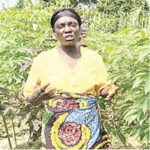Cattle rearing within the City centre has for a long time been causing a lot of embarrassment to all the FCT administrations, both past and present. Investigation revealed that there are many of these nomadic populations that were residents as active pastoralists within the area earmarked for the city for many years prior to the city creation, many of whom were actually born there, by implication they are also original inhabitants.
Unfortunately, by commission or omission, they have not been adequately captured in the FCT resettlement programme if ever they were. What it means is that these nomadic communities grazing their cattle across the City are not immigrants. It was the City that met them where they are, not the other way round. The solution isn’t far-fetched; it is simply relocation to the earmarked grazing reserves as recommended in the City development programme.
The virtually square shaped map of the FCT with its panhandle, was carved out of three states in 1976. With Niger State alone contributing more than 75 per cent, while the former Plateau and former Kwara States which are now in Nasarawa and Kogi states combined, accounted for less than 25 per cent. According to the original concept from the report of the Aguda Panel, all the local indigenes were to be evacuated to their parent states, to create an empty territory in which all Nigerians will have equal rights, otherwise referred as ‘No-man’s Land’. But, due to the prohibitive cost of the total evacuation, the federal government later permitted the local population to remain in their locations, with the exception of those within the City and within 5km location from the City periphery. That was what the Abuja Master Plan adopted.
The original inhabitants affected by the City project were given options for resettlements within the FCT or outside. Those who opted to be resettled outside the FCT included the original indigenes of Wuse, Asokoro, Kurunduma, Karon Majigi (wrongly called Karmajiji) and other villages formerly located on the site of the Phase I of the Federal Capital City, were resettled in the Suleja Emirate at Sabon Wuse, headquarters of Tafa Local Government Area of Niger State. While those that opted for resettlement within the FCT were resettled at Kubwa.
- Anyaoku, Adebanjo, others demand new constitution
- Dangote, Abdulsamad’s rift: Northern group calls for ceasefire
The primary occupation of the original inhabitants is predominantly farming except for the nomadic Fulanis, who are pastoralists. There are agricultural practices that can be accommodated within urban areas, hence, the term urban agriculture, but never pastoral agriculture.
Unlike other parts of the world where cattle keeping and dairy are strictly for economic purposes, in Northern Nigeria and most of Africa, it is a cultural heritage, a way of life for the Fulani tribe, and wealth storage system. It defines who they are as a people. As bona fide citizens with equal rights, their interests should also be considered; unfortunately, they were left behind when other communities were evacuated.
The City development programme recognises cattle grazing in the FCT as an important factor in supplying fresh meat to the capital city. The highly seasonal nature of rainfall and grass production cycle induces nomadism in cattle raising. It has been recognised that, to ensure a steady supply of meat in the FCT, stationary cattle ranching is to be an objective. Accordingly, due to the recognised economic importance of the nomadic community, grazing reserves were earmarked at Kawu, Rubochi, Paikon Kore and Wassa.
Presently, the contemporary challenges have rendered the traditional nomadism an endangered occupation. Some of the worst inter-tribal conflicts and massacres have been sparked and escalated by pastoral communities, looking for water, extra land and pasture for their cattle in the midst of rampant cattle rustling, raids, insecurity and unrest. Other obvious problems are the decline and stagnation of economies, the spread of cattle diseases, abduction of women and children during insurgencies.
Beyond the traditional method of their practice, the nomadic community’s economic value can be greatly improved by the adoption of modern methods. In order to combat the contemporary challenges, the FCTA can partner with some nongovernmental organisations that have developed a ‘zero-grazing’ programme, where pastoral communities will be trained, similar to the grower’s contract with dairy farmers, such that they will not need to travel and fight for land, rather they will be more profitable from the comfort of selling in one place.
Dairy farming is evidently a thriving and profitable business, because of the usefulness of beef and milk. These nomads will never be any economic liability, rather, a huge economic asset. What is required is for the FCTA to provide the land, produce the layout and evacuate the nomads thereof.
The law prohibiting cattle rearing in the City must be respected. On the other hand, the nomads’ rights to resettlement must also not be denied. That is what will provide a lasting solution to the embarrassing situation.

 Join Daily Trust WhatsApp Community For Quick Access To News and Happenings Around You.
Join Daily Trust WhatsApp Community For Quick Access To News and Happenings Around You.


